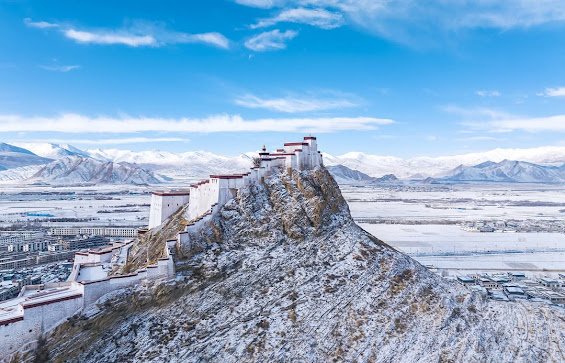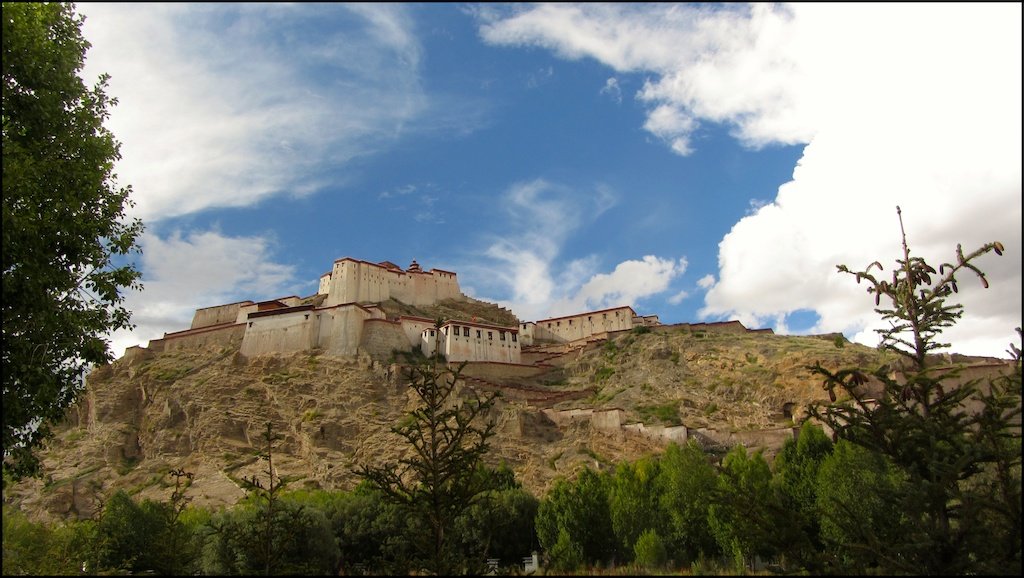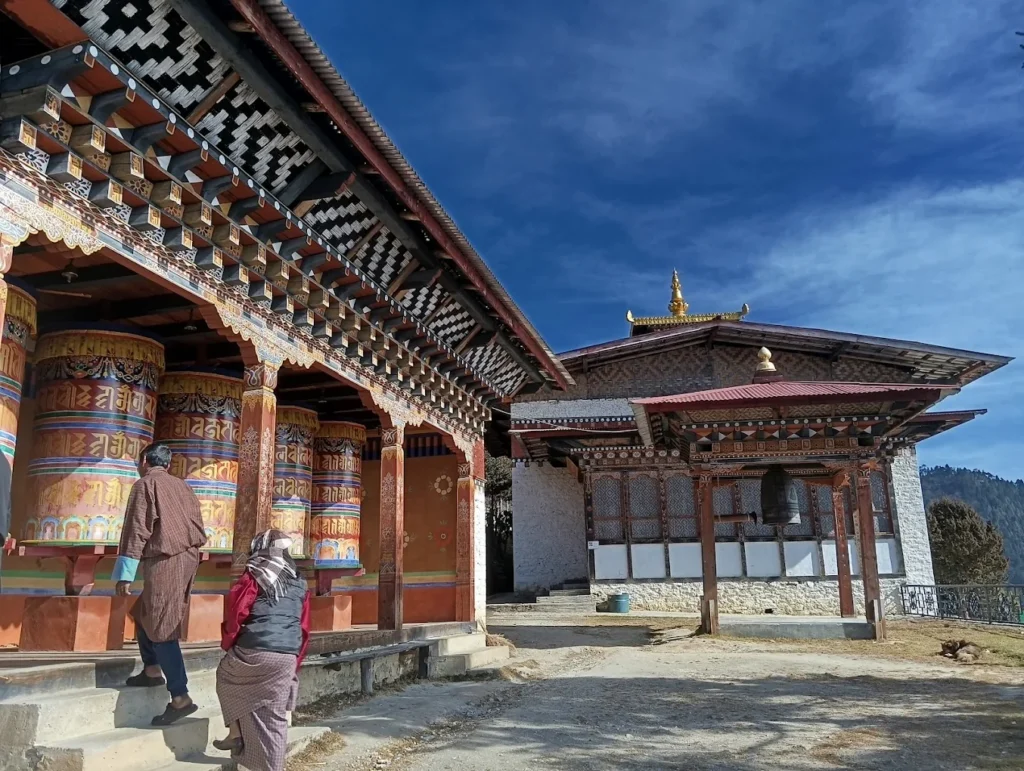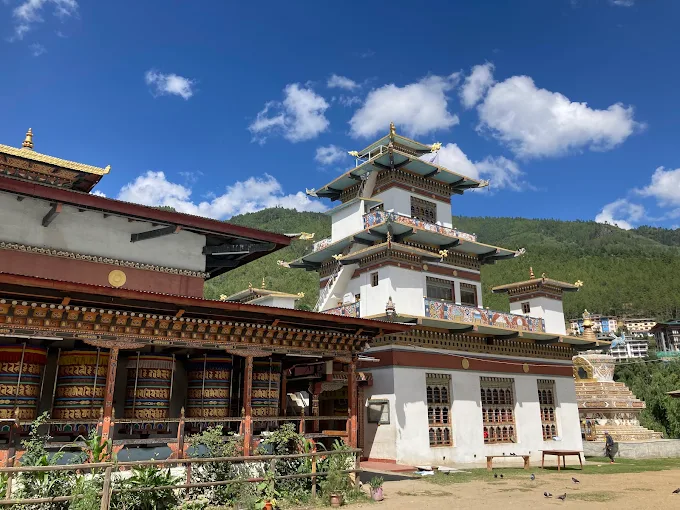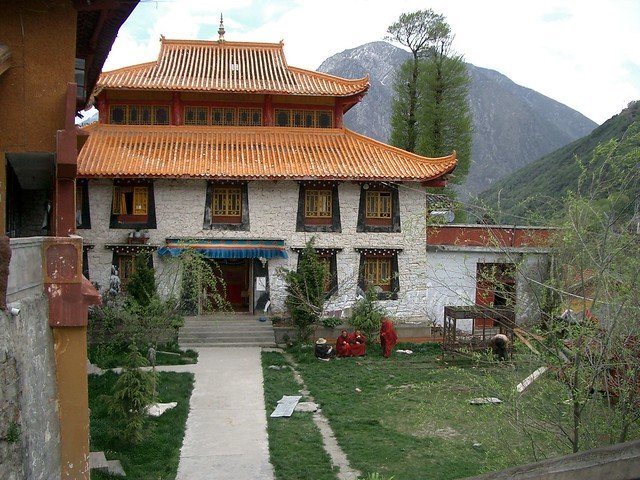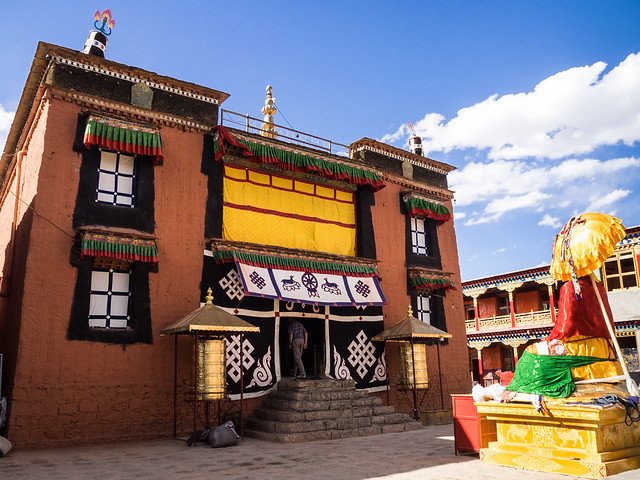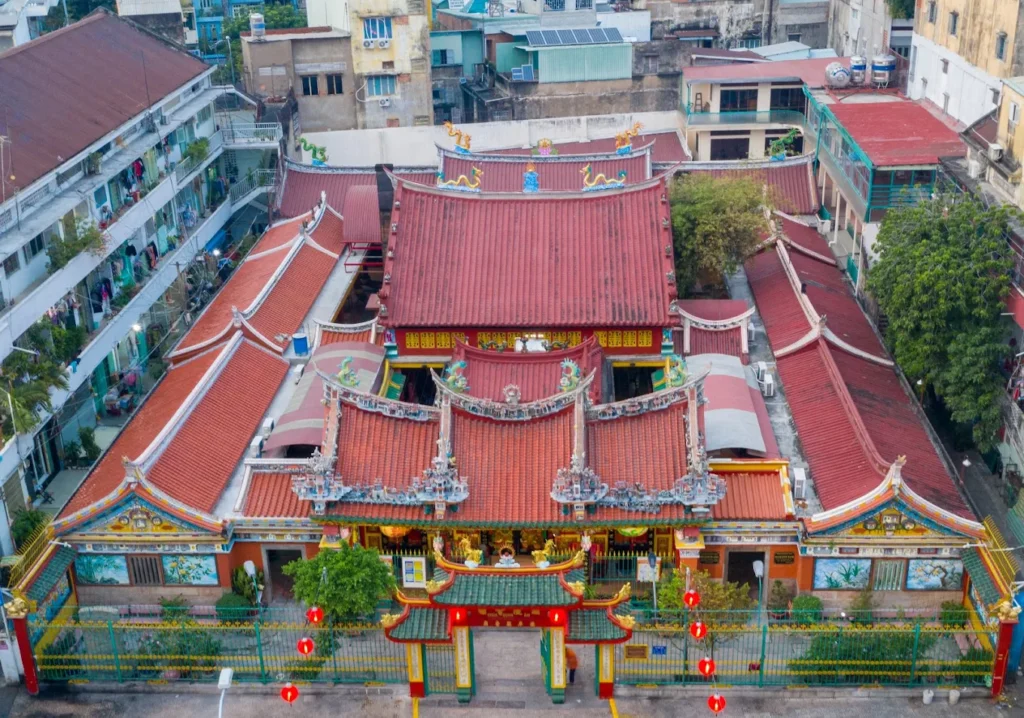Gyantse Dzong Monastery: The Fortress of Tibet’s Heroic Past
Gyantse Dzong Monastery, perched atop a rocky spur overlooking Gyantse, Tibet, stands as a formidable sentinel, blending the martial might of a fortress with the spiritual serenity of a Buddhist monastery. Built in the 14th century under the patronage of the Gyantse kings, this sacred site, often simply called Gyantse Dzong, is famed for its role in the 1904 British invasion, where Tibetan defenders made a heroic stand. Its weathered walls, adorned with ancient thangkas and small prayer halls, offer panoramic views of Gyantse’s golden barley fields, captivating travelers and historians. This immersive listing unveils Gyantse Dzong’s essence, guiding you through its storied past, architectural grandeur, sacred rituals, and practical visitor insights, offering a journey into a symbol of Tibetan resilience.
The Heroic Heart of Gyantse Dzong
Essence of Gyantse Dzong Monastery
Gyantse Dzong Monastery pulses with a dual identity, merging the defensive strength of a fortress with the spiritual depth of a Gelugpa monastery. Established in the 14th century, it served as the administrative and religious heart of Gyantse’s kings, safeguarding the region’s cultural heritage. Its defining feature—a commanding hilltop perch with sweeping valley views—marks it as a strategic and sacred landmark. Overlooking Palcho Monastery, Gyantse Dzong’s rugged charm draws those seeking history and spirituality.
- Spiritual Core: Gelugpa monastery within a fortress.
- Iconic Feature: Hilltop perch with panoramic views.
- Cultural Role: Symbol of Gyantse’s resilience and heritage.
Historical Evolution
Gyantse Dzong’s story began in the 1360s when Pelden Sangpo, a Gyantse prince, constructed the fortress to protect the Yarlung Valley trade routes. By the 15th century, it housed small Gelugpa prayer halls, aligning with the rise of the Dalai Lamas. In 1904, during the British Younghusband Expedition, Tibetan defenders held the Dzong against overwhelming odds, a tale of bravery etched into its walls. Despite partial damage in the Cultural Revolution, restoration since the 1980s has preserved its core, with a museum now showcasing 1904 relics.
- Founding: Built in the 1360s by Pelden Sangpo.
- 1904 Siege: Heroic stand against British invasion.
- Restoration: Revived since 1980s, museum added.
Cultural Impact
Gyantse Dzong’s legacy lies in its role as a fortress-monastery, embodying Tibet’s blend of governance and faith. Its 1904 defense, immortalized in local songs, inspires Tibetan pride, while its thangkas and murals offer insights into Gelugpa art. The annual horse-racing festival, tied to nearby Palcho Monastery, draws locals to the Dzong for blessings, preserving Gyantse’s vibrancy. Globally, it attracts historians studying works like Frederique Harrer’s Tibetan Fortresses, cementing its place in Tibetan history.
- Fortress-Monastery: Blends governance and spirituality.
- 1904 Legacy: Inspires Tibetan pride and songs.
- Global Appeal: Studied for historical and artistic value.
Signature Legacy
Gyantse Dzong’s hilltop perch, offering 360-degree views of Gyantse’s valley, is its crowning glory, symbolizing both defense and divine oversight. The Anti-British Invasion Museum, housed in a former armory, displays muskets and letters from 1904, a tangible link to its heroic past. A legend tells of a sacred conch shell, hidden in a prayer hall, blown during the siege to rally defenders, adding a mystical aura. These elements define Gyantse Dzong’s enduring identity.
- Hilltop Views: 360-degree valley panorama.
- Anti-British Museum: 1904 relics, muskets, letters.
- Conch Shell Legend: Sacred relic from 1904 siege.
Community and Global Reach
Locals revere Gyantse Dzong as a symbol of resilience, offering prayers in its chapels during festivals. The small monastic community, numbering about 20 monks, maintains its spiritual life, guiding pilgrims. The Tibetan diaspora visits to honor its history, while international tourists, inspired by Lonely Planet and China Highlights, explore its ramparts. The Dzong’s museum, featured in Tibet Vista, extends its historical narrative to global audiences.
- Local Devotion: Prayers in chapels by Gyantse residents.
- Monastic Community: 20 monks uphold rituals.
- Global Reach: Draws diaspora and history enthusiasts.
Architectural Grandeur of Gyantse Dzong
Distinctive Design
Gyantse Dzong’s architecture merges fortress durability with monastic simplicity, sprawling across a 300-meter-high spur at 4,020 meters altitude. Its thick stone walls, punctuated by arrow slits, evoke a medieval stronghold, while small prayer halls with golden spires reflect Gelugpa aesthetics. The design, influenced by Central Asian fortresses, centers on the main keep, with ramparts offering defensive vantage points. This blend creates a dramatic silhouette against Gyantse’s hills.
- Style: Fortress with Gelugpa prayer halls.
- Layout: Main keep with ramparts and chapels.
- Setting: Hilltop spur, dominating the valley.
Signature Structures
The main prayer hall, a modest lhakang, houses a gilded Sakyamuni statue and thangkas of Gelugpa lamas, glowing under butter lamp light. The Anti-British Invasion Museum, set in a stone armory, displays 1904 artifacts, including cannons and blood-stained robes. The Tsokchen Hall, used for monastic debates, features faded murals of Chenresig, while the upper ramparts hold a small chapel with a sacred conch shell relic. The fortress walls, with their winding paths, offer breathtaking valley views.
- Main Prayer Hall: Sakyamuni statue, Gelugpa thangkas.
- Anti-British Museum: 1904 artifacts, cannons.
- Tsokchen Hall: Chenresig murals, debate space.
Artisanal Mastery
Gyantse Dzong’s thangkas, painted by local monks, depict Sakyamuni and Tara with mineral pigments, their vibrant hues enduring centuries. The prayer hall’s statues, crafted from clay and bronze, showcase Gelugpa sculptural finesse, with Sakyamuni’s serene gaze captivating devotees. Stone walls, carved with mantras, reflect local masonry, while wooden beams in the Tsokchen Hall feature lotus motifs. These works, preserved through restoration, highlight the Dzong’s artistic heritage.
- Thangkas: Vibrant Gelugpa deities, mineral pigments.
- Statues: Clay and bronze, finely crafted.
- Stone Carvings: Mantra-etched fortress walls.
Hidden Architectural Gems
Gyantse Dzong hides subtle treasures within its rugged walls. The upper ramparts’ watchtower, rarely accessed, offers intimate views of Palcho Monastery, framed by prayer flags. A faded mural in a side chapel depicts the 1904 siege, a poignant historical snapshot. The fortress’s underground tunnels, closed to visitors, are said to link to the Yarlung Valley, adding intrigue. These details enrich the Dzong’s storied ambiance.
- Watchtower: Intimate Palcho views from ramparts.
- Siege Mural: Faded chapel artwork of 1904.
- Tunnels: Mythical underground passages.
Preservation and Evolution
Preserving Gyantse Dzong’s stone walls and relics is challenging due to Tibet’s harsh climate. Restoration since the 1980s, funded by state grants, repaired ramparts and thangkas using traditional techniques. The museum’s addition in the 1990s modernized the armory, blending history with accessibility. Ongoing efforts, supported by local donations, ensure the Dzong’s legacy endures, despite erosion threats.
- Restoration: Ramparts, thangkas repaired since 1980s.
- Modern Touches: Museum added in 1990s.
- Challenges: Climate erosion, limited funds.
Sacred Rites and Resilient Traditions
Sacred Daily Rites
Each dawn, Gyantse Dzong stirs with soft chants, as monks gather in the main prayer hall to recite sutras, their voices mingling with butter lamp smoke. Pilgrims offer khatas (silk scarves) at the Sakyamuni statue, their prayers echoing through the stone chamber. The hum of prayer wheels near the ramparts creates a meditative rhythm, enveloping visitors in the Dzong’s spiritual calm.
- Chanting: Morning sutras in prayer hall.
- Offerings: Khatas at Sakyamuni statue.
- Ambiance: Butter lamps, prayer wheel hum.
Unique Spiritual Practices
Gyantse Dzong’s monks perform Gelugpa rituals, including Tara recitations for protection, reflecting its monastic role. Pilgrims walk a short kora around the prayer hall, spinning prayer wheels to accrue merit, a practice tied to the Dzong’s sacred relics. The conch shell chapel hosts rare blessing ceremonies, where monks honor 1904 defenders, unique to Gyantse’s history. These rituals blend spirituality with historical reverence.
- Tara Recitations: Gelugpa protection rites.
- Kora: Prayer wheel-lined pilgrim trail.
- Conch Shell Blessings: Honoring 1904 defenders.
Vibrant Festival Traditions
Gyantse Dzong’s festivals align with Gyantse’s cultural pulse, particularly the horse-racing festival near Palcho Monastery, where monks offer prayers for competitors. During Saka Dawa, marking Buddha’s enlightenment, the Dzong hosts lamp offerings and kora walks, drawing locals. Sharing tsampa (roasted barley) and butter tea fosters community spirit, echoing the Dzong’s role as a gathering place during sieges.
- Horse-Racing Festival: Prayers for competitors.
- Saka Dawa: Lamp offerings, kora walks.
- Community Role: Tsampa and tea shared.
Visitor Engagement
Visitors can offer khatas or light butter lamps in the prayer hall, guided by monks, immersing in Gyantse Dzong’s spiritual life. Photography is permitted, capturing thangkas and rampart views, but flash is discouraged in chapels. Exploring the museum lets travelers connect with 1904 history, while walking the ramparts feels like stepping into a fortress’s past. Monks may share siege stories, adding depth.
- Offerings: Khatas, lamps with monk guidance.
- Photography: Allowed, no flash in chapels.
- Museum Visit: Connect with 1904 history.
Monastic and Community Roles
Gyantse Dzong’s 20 monks maintain daily rites, study Gelugpa texts, and guide visitors, upholding its spiritual legacy. They offer blessings for local harvests or life events, strengthening Gyantse ties. The Dzong trains young monks in thangka restoration, preserving artistry. This bond ensures the Dzong remains a living symbol of resilience, despite its small monastic scale.
- Monk Duties: Rites, study, visitor guidance.
- Community Ties: Blessings for local events.
- Art Preservation: Thangka restoration training.
Visiting Gyantse Dzong Monastery
Navigating to Gyantse Dzong Monastery
Gyantse Dzong sits atop a hill in central Gyantse, 100 km southeast of Shigatse, along the Gyantse-Shigatse road. From Lhasa, a 260-km drive via the G318 highway takes 5 hours by bus or private tour vehicle, passing Shigatse. In Gyantse, a 15-minute walk or 5-minute taxi from Palcho Monastery leads to the Dzong’s base, where a steep path climbs to the entrance. The fortress’s silhouette marks the destination.
- From Lhasa: 5-hour drive via Shigatse on G318.
- From Shigatse: 2-hour drive, 100 km northwest.
- Local Access: 15-minute walk from Palcho, steep climb.
Address of Gyantse Dzong Monastery
- Location: Gyantse Town, Gyantse County, Shigatse, Tibet Autonomous Region, China.
- Coordinates: 28.9167° N, 89.6833° E.
- Context: Hilltop, overlooking Palcho Monastery.
Visiting Hours and Etiquette
Gyantse Dzong is open daily from 9:00 AM to 6:00 PM, with morning visits offering cooler climbs. Dress modestly, covering shoulders and knees, and remove hats in prayer halls. Photography is allowed but avoid flash in chapels; drones require permission. Respect pilgrims by maintaining silence in sacred areas and not touching relics or museum artifacts.
- Hours: 9:00 AM–6:00 PM, best in morning.
- Dress Code: Modest clothing, no hats in chapels.
- Etiquette: No flash, silence near relics.
Accessibility and Safety
The Dzong’s hilltop paths are steep and rocky, challenging for those with mobility issues; sturdy shoes are essential. Wheelchair access is unavailable due to stairs; arrange assistance via tour operators. Gyantse’s 4,020-meter altitude requires acclimatization; hydrate and rest to avoid sickness. The site is safe, but watch for loose stones and festival crowds.
- Accessibility: Steep paths, no wheelchair access.
- Mobility Aids: Limited, arrange assistance.
- Safety: Acclimatize, watch for loose stones.
Amenities and Surroundings
Gyantse Dzong offers no restrooms or shops; bring water and snacks. Gyantse’s markets, a 10-minute walk, serve momos (dumplings) and butter tea, immersing visitors in local flavors. The hilltop ramparts provide serene reflection spots with valley views. Gyantse’s old town, buzzing with shops and teahouses, offers souvenirs and charm.
- Amenities: None on-site, bring essentials.
- Food: Gyantse markets with momos, tea.
- Surroundings: Ramparts, vibrant old town.
Immersive Visitor Tips
Arrive at sunrise to capture the Dzong’s silhouette against the dawn, highlighting its ramparts’ texture. Photograph the Sakyamuni statue from the prayer hall’s entrance for a glowing effect, avoiding flash. Climb the watchtower at dusk for golden valley views, with Palcho Monastery below. Savor butter tea in Gyantse’s markets, chatting with locals about 1904 tales for cultural depth.
- Sunrise Visits: Capture Dzong in dawn light.
- Photography: Prayer hall entrance for statue shots.
- Evening Climb: Watchtower for dusk views.
